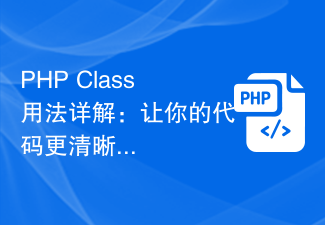This time I will show you how to use ES6 classes to imitate Vue to write a two-way binding. Use ES6 classes to imitate Vue to write a two-way binding. What are the precautions? What are the practical cases below? Let’s take a look.
The final effect is as follows:

Constructor (constructor)
Constructs a TinyVue object, including basic el, data, methods
class TinyVue{
constructor({el, data, methods}){
this.$data = data
this.$el = document.querySelector(el)
this.$methods = methods
// 初始化
this._compile()
this._updater()
this._watcher()
}
}
Compiler(compile)
Used to parse click events of v-model and elements bound to input boxes and drop-down boxes@ click.
First create a function to load events:
// el为元素tagName,attr为元素属性(v-model,@click)
_initEvents(el, attr, callBack) {
this.$el.querySelectorAll(el).forEach(i => {
if(i.hasAttribute(attr)) {
let key = i.getAttribute(attr)
callBack(i, key)
}
})
}
Load input box event
this._initEvents('input, textarea', 'v-model', (i, key) => {
i.addEventListener('input', () => {
Object.assign(this.$data, {[key]: i.value})
})
})
Load selection box event
this._initEvents('select', 'v-model', (i, key) => {
i.addEventListener('change', () => Object.assign(this.$data, {[key]: i.options[i.options.selectedIndex].value}))
})
Load click Event
The click event corresponds to the event in methods
this._initEvents('*', '@click', (i, key) => {
i.addEventListener('click', () => this.$methods[key].bind(this.$data)())
})
View updater(updater)
In the same way, first create a public function to handle different The view in the element includes the value of input and textarea, the selection value of select, and the innerHTML of p
_initView(el, attr, callBack) {
this.$el.querySelectorAll(el, attr, callBack).forEach(i => {
if(i.hasAttribute(attr)) {
let key = i.getAttribute(attr),
data = this.$data[key]
callBack(i, key, data)
}
})
}
Update the input box view
this._initView('input, textarea', 'v-model', (i, key, data) => {
i.value = data
})
Update the selection box view
this._initView('select', 'v-model', (i, key, data) => {
i.querySelectorAll('option').forEach(v => {
if(v.value == data) v.setAttribute('selected', true)
else v.removeAttribute('selected')
})
})
Update innerHTML
The implementation method here is a bit low. I only think of regular replacement {{text}}
let regExpInner = /\{{ *([\w_\-]+) *\}}/g
this.$el.querySelectorAll("*").forEach(i => {
let replaceList = i.innerHTML.match(regExpInner) || (i.hasAttribute('vueID') && i.getAttribute('vueID').match(regExpInner))
if(replaceList) {
if(!i.hasAttribute('vueID')) {
i.setAttribute('vueID', i.innerHTML)
}
i.innerHTML = i.getAttribute('vueID')
replaceList.forEach(v => {
let key = v.slice(2, v.length - 2)
i.innerHTML = i.innerHTML.replace(v, this.$data[key])
})
}
})
Listener (watcher)
Update after data changes View
<p>
<input><br>
<input><br>
<textarea></textarea><br>
<button>加一</button>
</p><h1 id="您输入的是-text-text-text">您输入的是:{{text1}}+{{text2}}+{{text3}}</h1>
<select>
<option>Volvo</option>
<option>Saab</option>
</select>
<select>
<option>Volvo</option>
<option>Saab</option>
</select>
<h1 id="您选择了-select">您选择了:{{select}}</h1>
<script></script>
<script>
let app = new TinyVue({
el: '#app',
data: {
text1: 123,
text2: 456,
text3: '文本框',
select: 'saab'
},
methods: {
add() {
this.text1 ++
this.text2 ++
}
}
})
</script>
TinyVue all code
class TinyVue{
constructor({el, data, methods}){
this.$data = data
this.$el = document.querySelector(el)
this.$methods = methods
this._compile()
this._updater()
this._watcher()
}
_watcher(data = this.$data) {
let that = this
Object.keys(data).forEach(i => {
let value = data[i]
Object.defineProperty(data, i, {
enumerable: true,
configurable: true,
get: function () {
return value;
},
set: function (newVal) {
if (value !== newVal) {
value = newVal;
that._updater()
}
}
})
})
}
_initEvents(el, attr, callBack) {
this.$el.querySelectorAll(el).forEach(i => {
if(i.hasAttribute(attr)) {
let key = i.getAttribute(attr)
callBack(i, key)
}
})
}
_initView(el, attr, callBack) {
this.$el.querySelectorAll(el, attr, callBack).forEach(i => {
if(i.hasAttribute(attr)) {
let key = i.getAttribute(attr),
data = this.$data[key]
callBack(i, key, data)
}
})
}
_updater() {
this._initView('input, textarea', 'v-model', (i, key, data) => {
i.value = data
})
this._initView('select', 'v-model', (i, key, data) => {
i.querySelectorAll('option').forEach(v => {
if(v.value == data) v.setAttribute('selected', true)
else v.removeAttribute('selected')
})
})
let regExpInner = /\{{ *([\w_\-]+) *\}}/g
this.$el.querySelectorAll("*").forEach(i => {
let replaceList = i.innerHTML.match(regExpInner) || (i.hasAttribute('vueID') && i.getAttribute('vueID').match(regExpInner))
if(replaceList) {
if(!i.hasAttribute('vueID')) {
i.setAttribute('vueID', i.innerHTML)
}
i.innerHTML = i.getAttribute('vueID')
replaceList.forEach(v => {
let key = v.slice(2, v.length - 2)
i.innerHTML = i.innerHTML.replace(v, this.$data[key])
})
}
})
}
_compile() {
this._initEvents('*', '@click', (i, key) => {
i.addEventListener('click', () => this.$methods[key].bind(this.$data)())
})
this._initEvents('input, textarea', 'v-model', (i, key) => {
i.addEventListener('input', () => {
Object.assign(this.$data, {[key]: i.value})
})
})
this._initEvents('select', 'v-model', (i, key) => {
i.addEventListener('change', () => Object.assign(this.$data, {[key]: i.options[i.options.selectedIndex].value}))
})
}
}
I believe you have mastered the method after reading the case in this article. For more exciting information, please pay attention to other related articles on the php Chinese website!
Recommended reading:
How to use Vue to implement a countdown button
How to use Vue to write a two-way data binding
The above is the detailed content of How to use ES6 classes to imitate Vue and write a two-way binding. For more information, please follow other related articles on the PHP Chinese website!
 Python中的class类和method方法的使用方法Apr 21, 2023 pm 02:28 PM
Python中的class类和method方法的使用方法Apr 21, 2023 pm 02:28 PM类和方法的概念和实例类(Class):用来描述具有相同的属性和方法的对象的集合。它定义了该集合中每个对象所共有的属性和方法。对象是类的实例。方法:类中定义的函数。类的构造方法__init__():类有一个名为init()的特殊方法(构造方法),该方法在类实例化时会自动调用。实例变量:在类的声明中,属性是用变量来表示的,这种变量就称为实例变量,实例变量就是一个用self修饰的变量。实例化:创建一个类的实例,类的具体对象。继承:即一个派生类(derivedclass)继承基类(baseclass)的
 机器人学我表情的样子,让人感到一丝恐惧Apr 09, 2023 am 10:11 AM
机器人学我表情的样子,让人感到一丝恐惧Apr 09, 2023 am 10:11 AM通常,机器人的主要功能是完成一些简单的操作任务,我们希望机器人可以模仿人,让能力尽可能接近人类水平。不论是小米的 CyberOne 还是特斯拉的 Optimus,人们关心的主要是其机械关节数量,控制算法和行走速度。不过在这个领域,有些人探索的方向更加脑洞大开:现在,有一种机器人把模仿真人表情做到了极致:先尝试一下自拍。从「嫌弃」到「惊讶」,都可以做到完全同步:这个机器人名叫 Ameca,是个表情怪。除了模仿,它自己也能照镜子做很多小表情,看起来非常像真人。Ameca「假装」第一次见到镜子,首
 使用jQuery替换元素的class名称Feb 24, 2024 pm 11:03 PM
使用jQuery替换元素的class名称Feb 24, 2024 pm 11:03 PMjQuery是一种经典的JavaScript库,被广泛应用于网页开发中,它简化了在网页上处理事件、操作DOM元素和执行动画等操作。在使用jQuery时,经常会遇到需要替换元素的class名的情况,本文将介绍一些实用的方法,以及具体的代码示例。1.使用removeClass()和addClass()方法jQuery提供了removeClass()方法用于删除
 python中class是什么意思May 21, 2019 pm 05:10 PM
python中class是什么意思May 21, 2019 pm 05:10 PMclass是python中的一个关键字,用来定义一个类,定义类的方法:class后面加一个空格然后加类名;类名规则:首字母大写,如果多个单词用驼峰命名法,如【class Dog()】。
 PHP Class用法详解:让你的代码更清晰易读Mar 10, 2024 pm 12:03 PM
PHP Class用法详解:让你的代码更清晰易读Mar 10, 2024 pm 12:03 PM在编写PHP代码时,使用类(Class)是一个非常常见的做法。通过使用类,我们可以将相关的功能和数据封装在一个单独的单元中,使代码更加清晰、易读和易维护。本文将详细介绍PHPClass的用法,并提供具体的代码示例,帮助读者更好地理解如何在实际项目中应用类来优化代码。1.创建和使用类在PHP中,可以使用关键字class来定义一个类,并在类中定义属性和方法。
 SpringBoot怎么通过自定义classloader加密保护class文件May 11, 2023 pm 09:07 PM
SpringBoot怎么通过自定义classloader加密保护class文件May 11, 2023 pm 09:07 PM背景最近针对公司框架进行关键业务代码进行加密处理,防止通过jd-gui等反编译工具能够轻松还原工程代码,相关混淆方案配置使用比较复杂且针对springboot项目问题较多,所以针对class文件加密再通过自定义的classloder进行解密加载,此方案并不是绝对安全,只是加大反编译的困难程度,防君子不防小人,整体加密保护流程图如下图所示maven插件加密使用自定义maven插件对编译后指定的class文件进行加密,加密后的class文件拷贝到指定路径,这里是保存到resource/corecla
 Vue报错:无法正确使用v-bind绑定class和style,怎样解决?Aug 26, 2023 pm 10:58 PM
Vue报错:无法正确使用v-bind绑定class和style,怎样解决?Aug 26, 2023 pm 10:58 PMVue报错:无法正确使用v-bind绑定class和style,怎样解决?在Vue开发中,我们经常会用到v-bind指令来动态绑定class和style,但是有时候我们可能会遇到一些问题,如无法正确使用v-bind绑定class和style。在本篇文章中,我将为你解释这个问题的原因,并提供解决方案。首先,让我们先了解一下v-bind指令。v-bind用于将V
 java的预定义Class对象的方法Jul 01, 2023 pm 06:41 PM
java的预定义Class对象的方法Jul 01, 2023 pm 06:41 PM基本的Java类型(boolean、byte、char、short、int、long、float和double)和关键字void通过class属性也表示为Class对象;Class类中booleanisPrimitive():判定指定的Class对象是否表示一个基本类型。包装类和Void类的静态TYPE字段;Integer.TYPE==int.class;Integer.class==int.class;数组类型的Class实例对象:Classclz=String[].class;数组的Clas


Hot AI Tools

Undresser.AI Undress
AI-powered app for creating realistic nude photos

AI Clothes Remover
Online AI tool for removing clothes from photos.

Undress AI Tool
Undress images for free

Clothoff.io
AI clothes remover

AI Hentai Generator
Generate AI Hentai for free.

Hot Article

Hot Tools

MinGW - Minimalist GNU for Windows
This project is in the process of being migrated to osdn.net/projects/mingw, you can continue to follow us there. MinGW: A native Windows port of the GNU Compiler Collection (GCC), freely distributable import libraries and header files for building native Windows applications; includes extensions to the MSVC runtime to support C99 functionality. All MinGW software can run on 64-bit Windows platforms.

DVWA
Damn Vulnerable Web App (DVWA) is a PHP/MySQL web application that is very vulnerable. Its main goals are to be an aid for security professionals to test their skills and tools in a legal environment, to help web developers better understand the process of securing web applications, and to help teachers/students teach/learn in a classroom environment Web application security. The goal of DVWA is to practice some of the most common web vulnerabilities through a simple and straightforward interface, with varying degrees of difficulty. Please note that this software

Notepad++7.3.1
Easy-to-use and free code editor

SublimeText3 Mac version
God-level code editing software (SublimeText3)

Atom editor mac version download
The most popular open source editor







